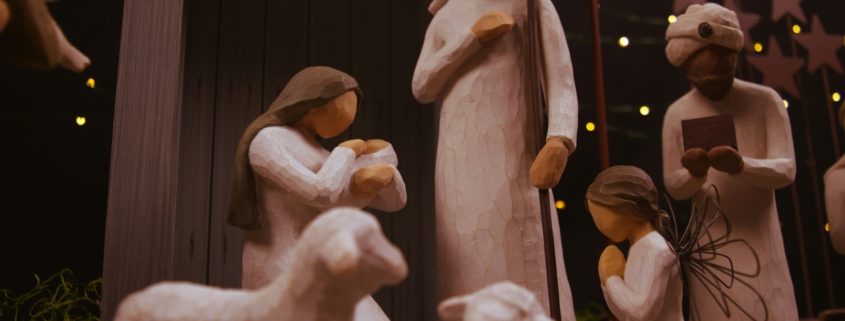The Truth About Christmas
I can remember the first time my oldest child asked me if Santa was real. She must have been about 5 or 6 years old, and I am sure she had heard things from friends at school and wanted to know from her parents if Santa was a real person who delivered presents for Christmas. At that age, she already knew that Jesus was her personal Savior, having come to an awareness of her need for Jesus to save her when she was 4 and 1/2 years old. I know that seems young (and it is), but her decision was totally driven by her own questions and her own choice to follow Jesus, unprompted by us as her parents, and was followed at that young age already with the realization of how that shaped her choices.
But, back to Santa. When she asked us that question – “Is Santa real?” – I was faced with a dilemma. Do I tell a little lie and preserve the fantasy for a little child, or do I tell the truth and squash childhood imagination? In the end, realized that it wasn’t a true “either/or” choice, and so we chose to tell the truth while also preserving imagination and fun. Because she asked, we knew she was seeking to make sense of the world around her, so we told her the truth – “No, Santa is not real . . .” – but then framed it into a purpose of imagination and joy – “. . . but it’s fun to pretend and imagine the stories of Santa, so we do it just for fun at Christmas time. But the real person we celebrate at Christmas is Jesus.”
Why was this important for us? Because we wanted our child to grow up with an understanding of the difference between fantasy (the Santa Clause we talk about at Christmas) and meaningful truth (the significance of the birth of Jesus). That’s the most important message of Christmas. Not that we receive gifts, or that Santa knows who is naughty or nice, or that reindeer can fly. The real message is that at this time, over 2000 years ago, God entered into our physical realm in the person of His Son, born in Bethlehem to Mary and Joseph. He did this so that Jesus could live His life as both fully God and fully man (theologians call this the Hypostatic Union), and live it sinlessly, so that He would be qualified to become the perfect sacrifice to pay for our sins through His death on the cross, burial, and resurrection. In doing this, He paid the penalty for our sins and opened the door for us to be reconciled to God. And that’s the Gospel message: that Jesus paid for our sins so that we could receive salvation by trusting fully in His work on the cross.
That’s the truth about Christmas. It’s the season that brought Jesus into our midst, which in turn would make salvation available to all who believe, not in the “jolly old elf” who brings us presents, but in the real, divine person who came to save us from our sin. My friend, if you have not placed your faith in Jesus Christ as your Savior, as the one and only means of salvation from your sin and reconciliation with God, I urge you to do that today. Acknowledge your sin and accept the payment of Jesus. “For God so loved the world that He gave His only begotten Son, that whosoever believes in Him will not perish but have everlasting life.” John 3:16




